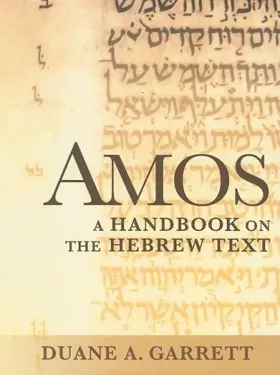

Amos: A Handbook on the Hebrew Text
in Baylor Handbook on the Hebrew Bible
Pages
300 pages
Publisher
Baylor University Press
Published
8/1/2008
ISBN-13
9781932792690
Reviews
Waco, Tex.: Baylor University Press, 2008. Pp. vi + 304. Paper. $24.95. ISBN 1932792694. John Engle Ohio State University Columbus, Ohio Duane Garrett argues for a “chiastic structure” for the book of Amos and claims “internal coherence” for each division (6–7). He observes that “the seven [sic] divisions of Amos after the superscript (1:1) and the poetic proclamation of YHWH making his voice heard (1:2), are as follows…: I. 1:3–2:16 … II. 3:1–15 … III. 4:1–13 … IV. 5:1–6:14 … V. 7:1–8:3 … VI. 8:4–9:15” (4). Each of these divisions is treated individually with explanatory notes, a translation, and the fully vocalized and accented Hebrew text. He deals with the prose parts clause by clause and the poems line by line. He identifies the lines by “the major disjunctive marks of the cantillation system” (8) and O’Connor’s “poetic constraints” (9). He defends this poetic analysis with the surprising assertion that “other approaches to Hebrew colometry (such as counting stresses, words, or syllables) produce no meaningful results and are not valid” (10). I shall review the book according to Garrett’s divisions and conclude that it offers only limited guidance to its readers due to its large number of errors and uncertain methodologies. In the text of 1:1 Garrett omits Mydqnb, but he does treat it in his notes, where he defines both words. He does not indicate that the noun is definite, and only rarely does he do so, as in 9:13, where he notes that we find b “and the definite article” (286; cf. 257). What his basis is for indicating definiteness is not clear, as is his failure to mention the elision of the heh in these contexts. Further, what lexical tool(s) he is using is unclear. He regularly refers to “HALOT” (e.g.
[Full Review]
